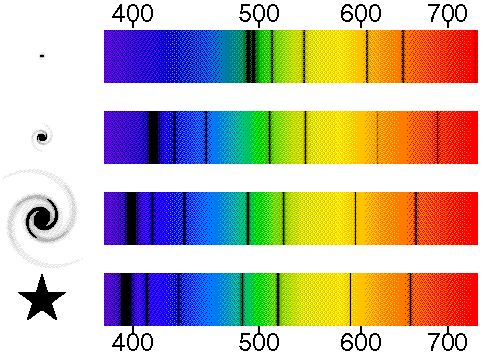Light from distant stars is also affected by the Doppler effect. The spectrum of light is shifted toward the lower frequency (red) end of the spectrum due to the motion of the star away from our solar system. This is called redshift. Since the farther away a star is, the faster it is receding, the redshift of a star is also a measure of its radial velocity, or speed away from us. As you can see in the illustration below, the dark lines of the absorption spectrum are shifted to the right, or red end of the spectrum as the distance from us increases.

(c) Edward L. Wright
By measuring this shift, scientists can calculate a star's radial velocity.